The power of rigorous futures

Let’s say your job is to transform the entire landscape of learning and education. For the world.
Now let’s say some massive global event comes along and disrupts everything, everywhere, all at once. (Not hard to imagine, is it?)
That’s what leaders at Imaginable Futures faced in 2020. The actions it took in that moment put it ahead of the curve as a new world emerged. The impact was concrete and meaningful, with Imaginable Future’s work inspiring others to fund more than a million dollars’ worth of related initiatives and educational moonshots.
For 40 years, IDEO has helped the world’s leading organizations make the future, sometimes with startling prescience. Our work in strategic futuring has been informed and inspired by our client partnerships, but also by generations of futuring practitioners, to whom we’re indebted.
Now imagine that you're the CEO of a company navigating an uncertain future. Perhaps you already are. You might know your customers today, but you can’t see who they'll be in a decade, or what they’ll need by then. Current industry norms might no longer apply. Today’s buzzy trends will be long forgotten.
How do you make your future?
1. Your vision should be an inspiring anchor, not an empty gesture
Strategy is action: it’s not about what you say; it’s entirely about what you choose and then do. The future presents seemingly limitless choices for a leader—more the further out you look. Possible futures must be narrowed to probable futures, and from there to preferred futures. And that’s what effective visions of the future bring to life.
A great vision is inspiring and suffused with imagination. But it also enables leaders to focus on the right choices, in service of where they want to go, and to make such choices with confidence.
Not long ago, the CEO of one of the world’s leading consumer electronics companies asked, “If we could do anything in the next five years, what would it be?” Partnering closely with their team, IDEO developed seven visions of the future they could touch today, each of them optimistic, and each of them grounded in rigorous research.
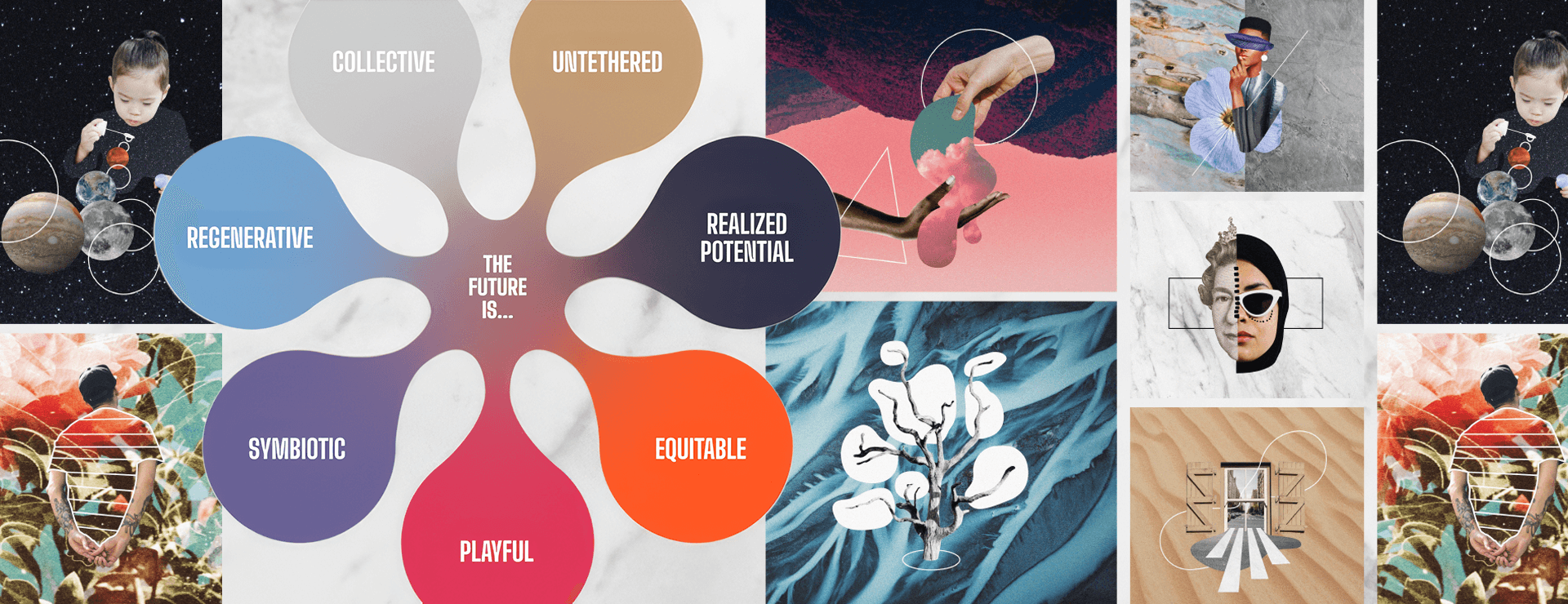
Each of these future worlds provoked ways the company might respond to it: hundreds of ideas and concepts it could potentially bring to its future customers. The CEO chose three to take forward, and you might have even seen a Superbowl ad about one of them.
In another project, we also helped a global athletics brand take a jog in the future by creating a series of immersive "day in the life” stories, complete with billboards for fictional versions of major sporting events.
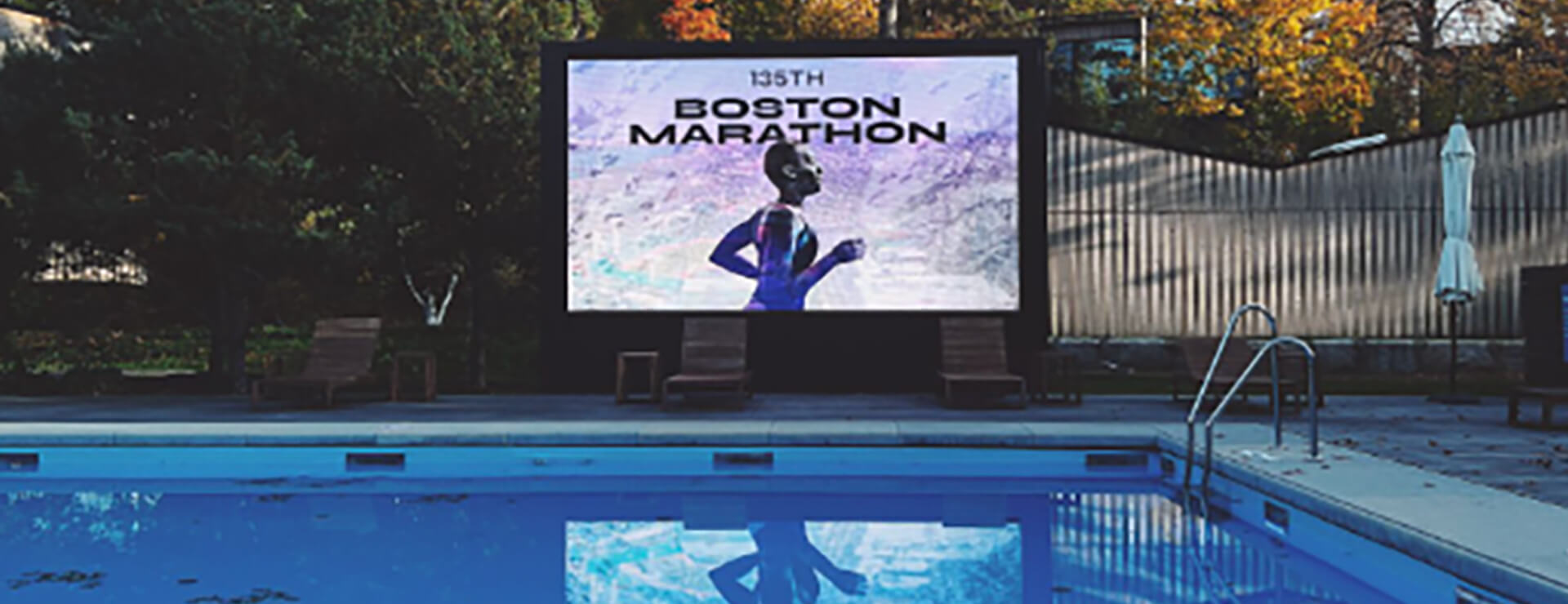
Creating tangible objects, stories, and experiences that invite you directly into the future is one of the ways we blend imagination and rigor in our work: It makes real the effect of intangible forces, and helps people grasp and distill what's most critical for their own work.
All of that helps move organizations to action.
2. Leap beyond the distraction of today's disputes
Infinite futures are possible, but not all are likely. Even fewer are desirable. And more often than not, the best futures—the ways we want things to turn out—can only happen as a result of deep collaboration: People need to agree on what matters, and then work toward it.
But getting aligned is hard work. In many organizations, team members are distributed across the world or engaged in work that defies simple distillation or storytelling, so getting on the same page can feel like an insurmountable obstacle. People have different goals and are accountable for different things. Over time, conversations can surface stark differences of opinion. Before long, you’re stuck.
Strategic futuring is helpful here, too. Creating future visions together before deeper strategy work begins is a way to discover what’s desirable and magnetic for everyone.
For example, to unlock a new scale of impact, the global environmental non-profit Conservation International (CI) needed a strategy that could unite its country offices on the African continent. Each had its own priorities, norms, goals, and personalities—a huge source of strength for the organization, but a barrier to scale. To create space for a new approach, CI jumped decades years into the future. Partnering with IDEO, CI experts and teams developed a set of short stories set in the year 2050, exploring future possibilities in sequestration research, satellite monitoring technologies, and more.
That futuring work created a shared language, goal, and frame of reference for the country offices. And the work accelerated the subsequent strategic decision-making and investment. The resulting goal? To expand the protection of grasslands, savannah, and scrublands in a transboundary area across six African countries. It's an effort that's now scaling Conservation International's successful Herding for Health model as a mechanism for partner-driven community climate resilience, targeting the protection of at least 10 million hectares by 2030 in partnership with a continent-wide NGO.
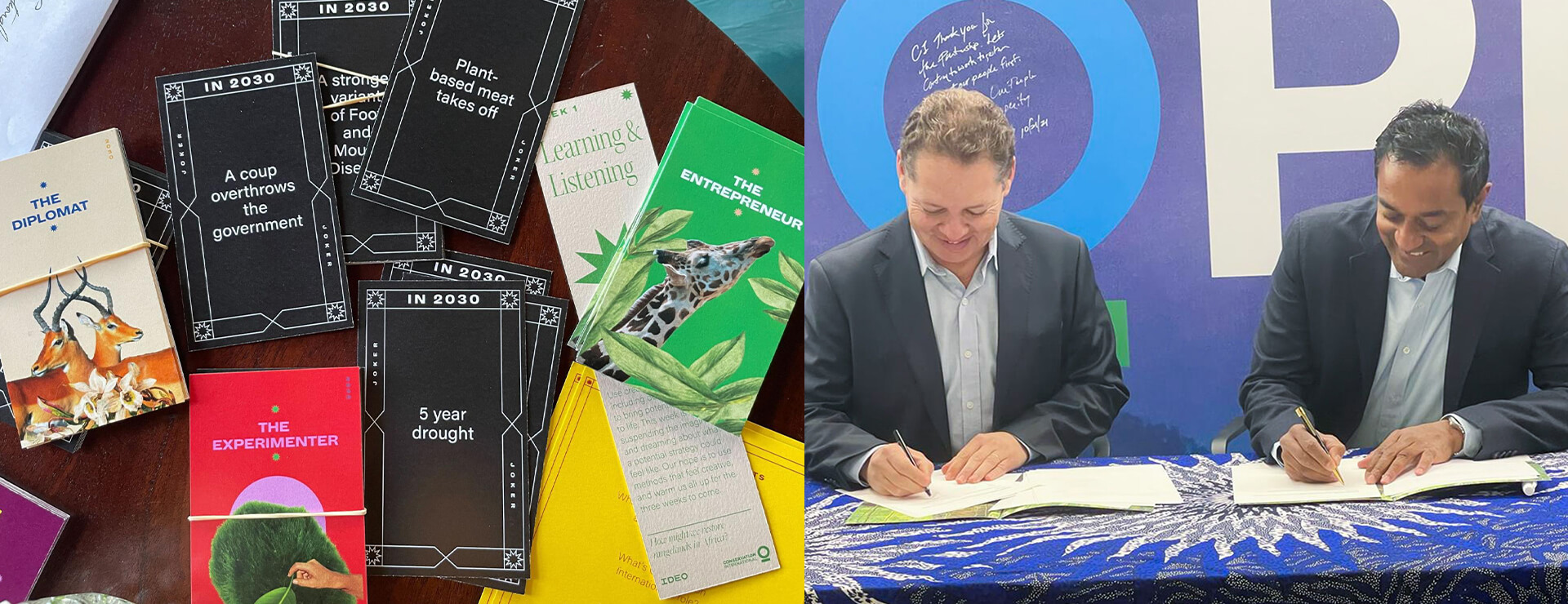
3. Remember: No business or organization is an island
To thrive in the future, organizations must also think about all the forces beyond their control—from climate events or cultural changes (both seen and unseen) to the deployment of emerging technologies. And they must even consider the potential effects of forces seemingly unrelated to their line of business. Because they might just matter.
That’s a lot to take in; making sense of it all can feel impossible. And a giant research document might just make it feel worse. Here again, strategic futuring offers a way forward. Rigorous speculation, informed by signals and data, picks out what’s most relevant from the noise—even if it’s unexpected. Distilling that informed speculation into imagined scenarios, and then into concrete experiences, can move leaders to reflect with urgency and clarity, and make choices with confidence.
At IDEO, we sustain an ongoing signal scanning practice, taking notice of what’s shifting across industries and cultures. We blend that informed sense of what’s coming with our client partners’ insights and data to build a rich tapestry of foresight. And then we employ all the crafts of design—from engineering and environments to software development and storytelling—to give life to the visions of the future that result.
When people step into a wide-angle view of what might be coming, they see what’s possible and discover new motivations to act. We used an AI-enabled process we developed to create a pocket viewfinder for D.C. residents to help them visualize the future of their city while standing in their own neighborhood.
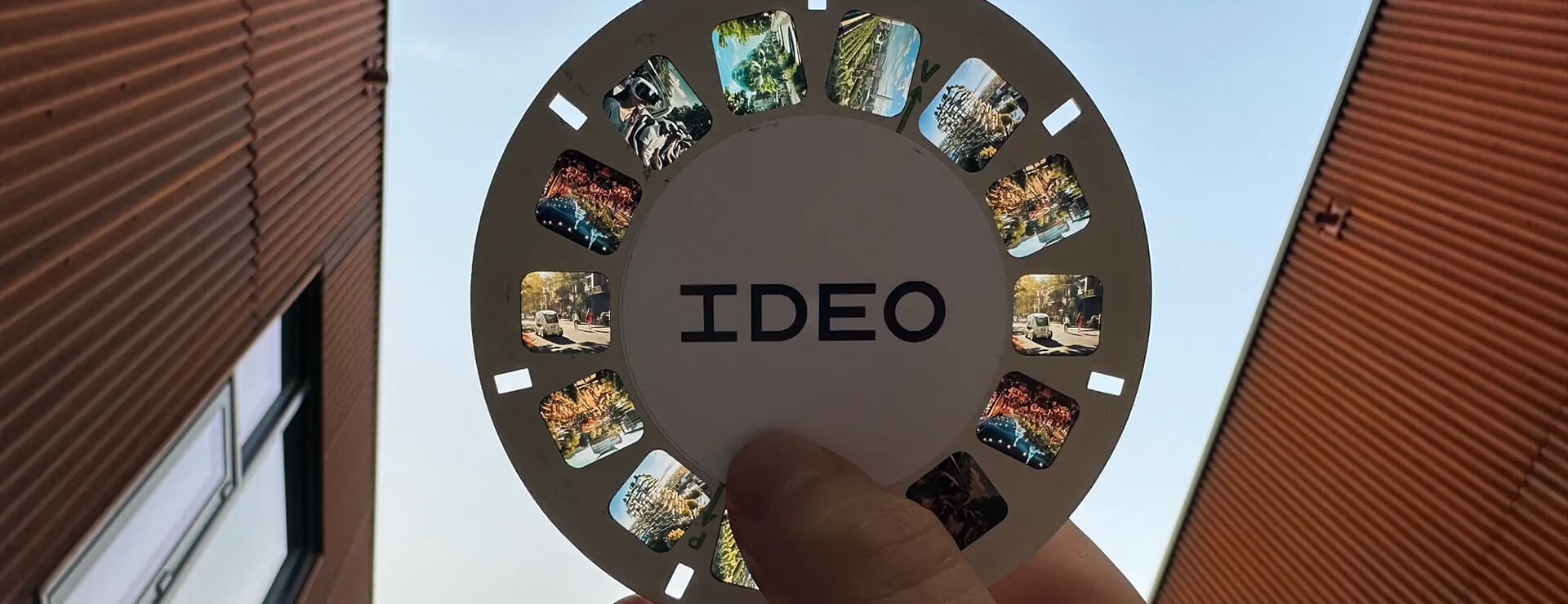
Games can take that kind of immersion a level deeper. Recently IDEO helped global enterprise software company Sage investigate how the company might support businesses working to achieve net zero emissions. We designed a choose-your-own adventure story that asked people to play characters navigating business demands in a climate-impacted 2030; it generated empathy for future users, which led to support for the launch of the pioneering Sage Earth platform.
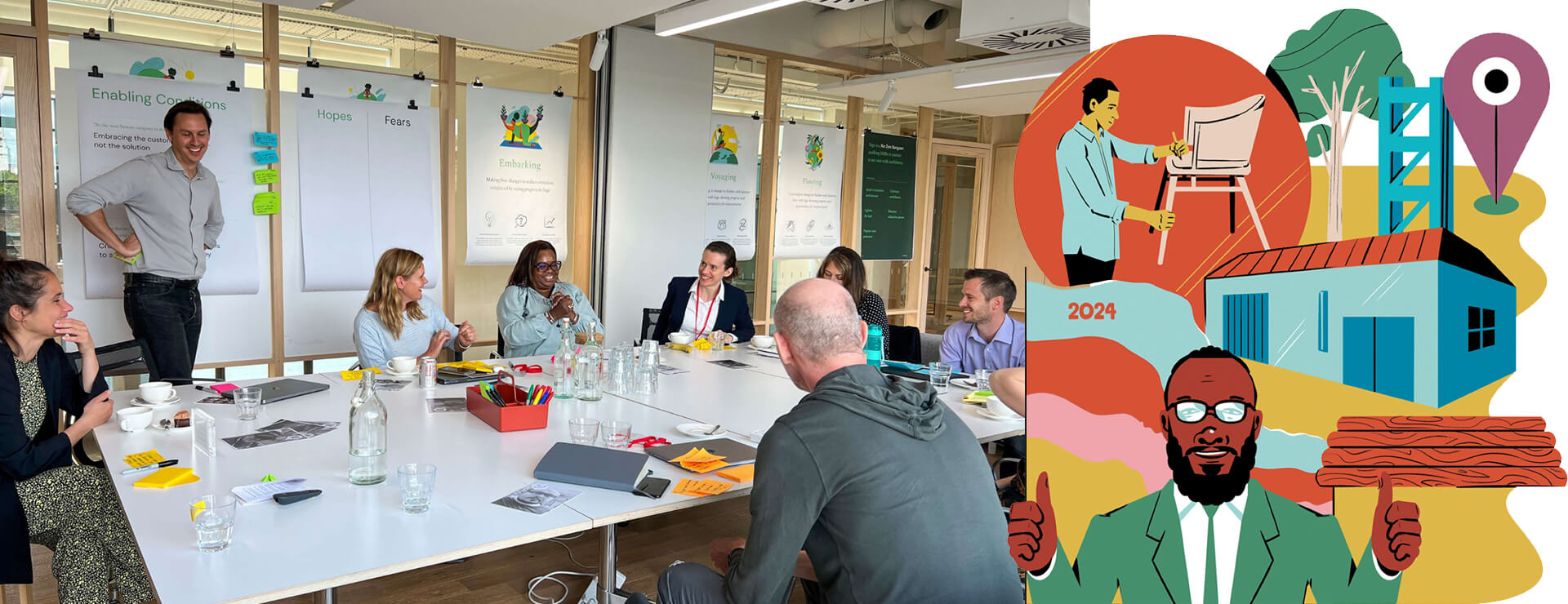
Sometimes, the outputs of strategic futuring work are entirely physical and can take over whole spaces. At the Ellen MacArthur Foundation’s 2023 circular economy summit, we staged a home from the year 2050 populated with the personal items and detritus that might shape our daily lives if access to natural resources were to change, and if environmental regulations were to evolve as a result.
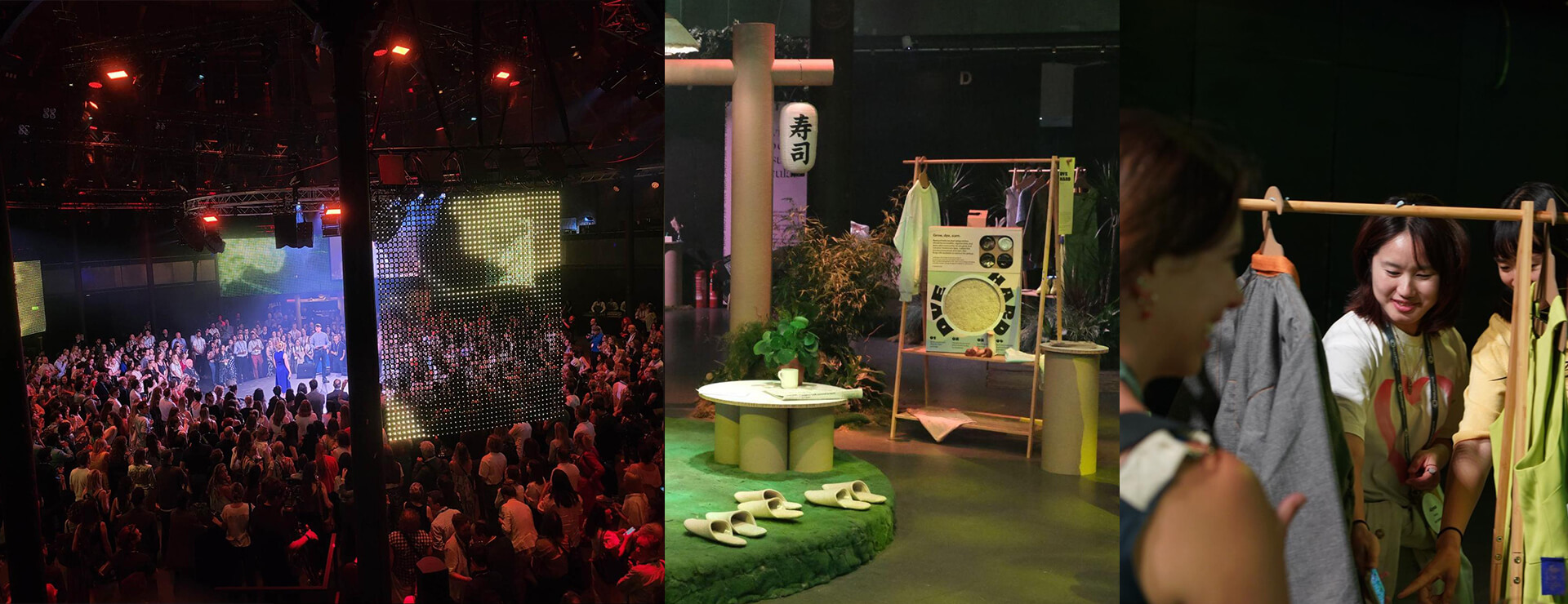
And at COP28 in Dubai, we built three distinct worlds from our collective climate future, traversing continents and culture, economic realities, and societal roles. We invited people to step directly into these futures—into spaces suspended deliberately between reality and possibility.
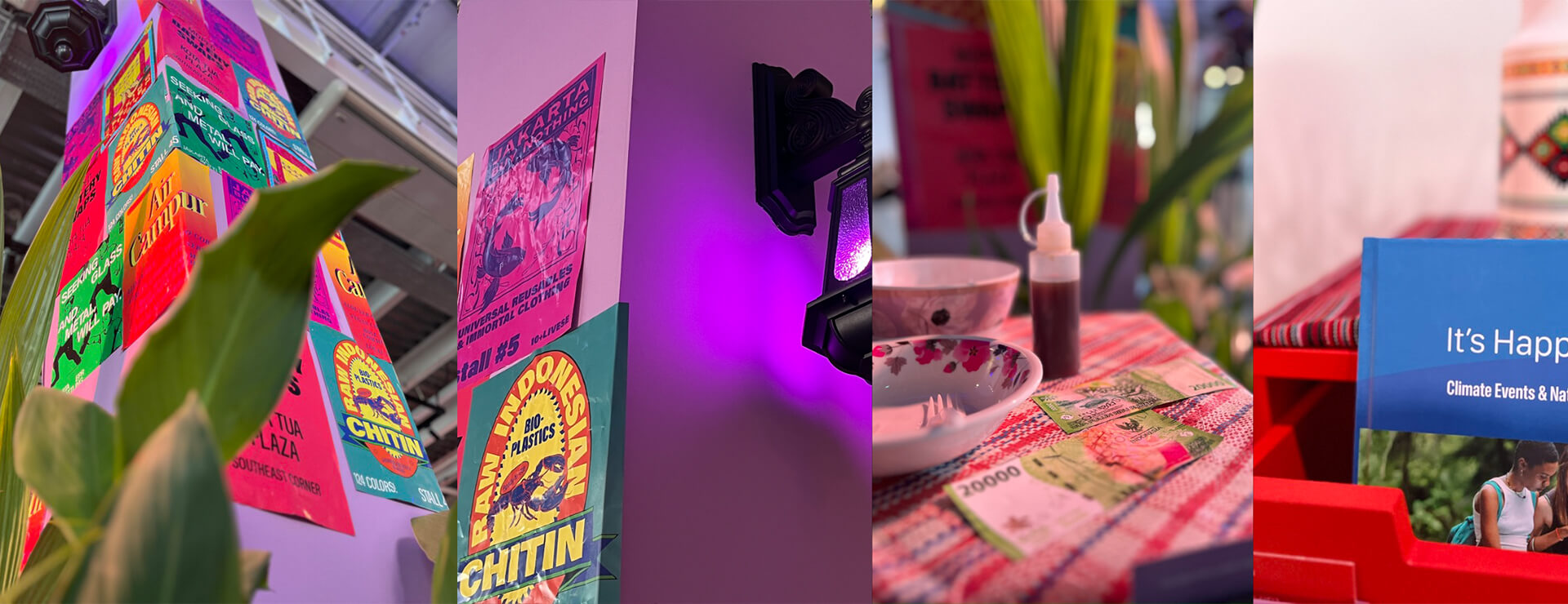
Do you want to make your future?
Strategic futuring is a powerful tool for solving significant, far-reaching business challenges.
You may be a leader striving to distill many levers of change affecting your organization. You may be part of a team that needs to find positive, energized alignment around what to do to set up your next era of growth.
Or you might be a leader determined to understand how your business may be transformed by forces far beyond your influence.
Wherever you are today, strategic futuring can help you make your own tomorrow.
Words and art


Subscribe

.svg)









